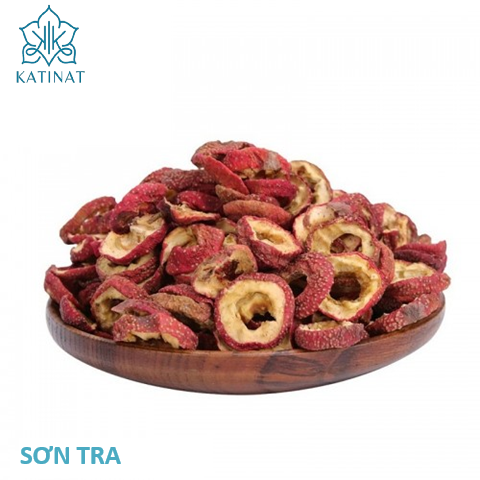
Crataegus pinnatifida (belonging to the Rosaceae family), also known as Chinese hawthorn, is a sweet and sour fruit commonly used in traditional medicine and cuisine. Hawthorn fruit has many effects in supporting digestion, reducing blood fat and regulating blood pressure.
Botanical Descriptions:
Trees deciduous, to 6 m tall, with thorns 1–2 cm or sometimes unarmed. Branchlets purplish brown when young, grayish brown when old, terete, subglabrous or glabrous when young; buds purplish red, triangular-ovoid, glabrous.
Some main medicinal uses:
1. Support digestion
• Stimulates digestion, increases gastric secretion, reduces bloating, flatulence.
• Often used in cases of indigestion, especially when eating a lot of protein and fat.
2. Reduces blood fat, supports the cardiovascular system
• Has the effect of lowering cholesterol, supporting blood pressure regulation, improving blood circulation.
• Suitable for people with high blood pressure, high blood fat or risk of cardiovascular disease.
3. Activates blood circulation, reduces blood stasis
• Helps break up blood stasis, dissolves blood clots, often used in postpartum support remedies, menstrual cramps.
• Combined with other herbs in the treatment of pain due to blood stasis.
4. Mild antibacterial, protects the liver
• Contains compounds with antioxidant, mild antibacterial effects, supports liver function.
• Helps protect liver cells from damage caused by toxins or oxidative stress.
5. Applications in food
• Hawthorn fruit is often processed into syrup, dried fruit, soft drinks, or dried as medicine.
• Has a sweet and sour taste, easy to use, suitable as a snack or medicinal tea.
Notes when using:
• Do not use when hungry because the sour taste can irritate the stomach.
• People with stomach ulcers, esophageal reflux should be careful.
• Do not overdose because it can cause diarrhea or cardiovascular effects in sensitive people.





